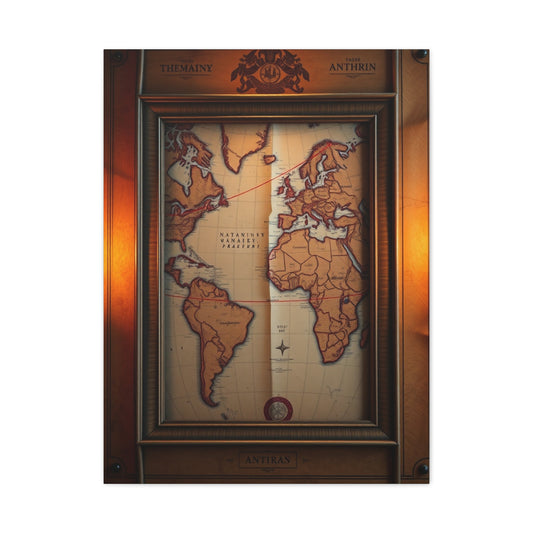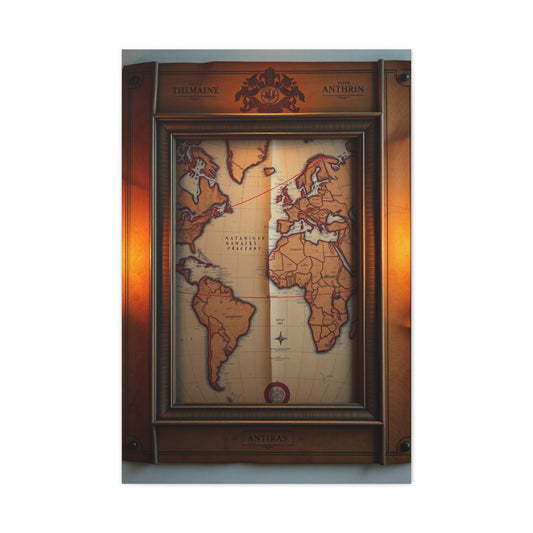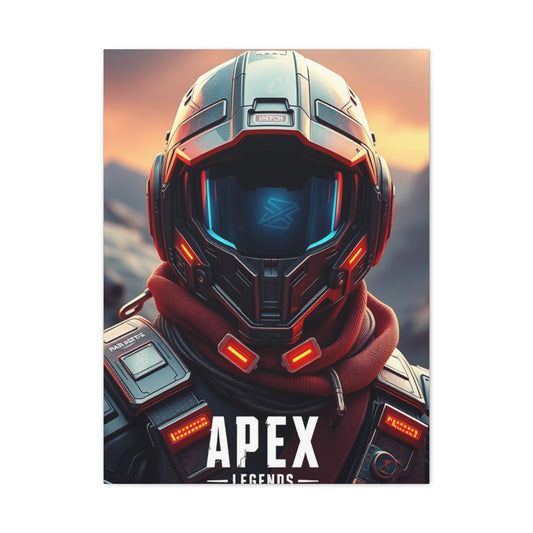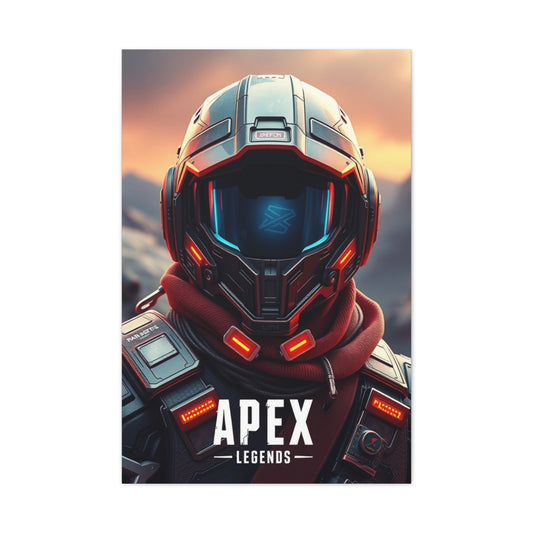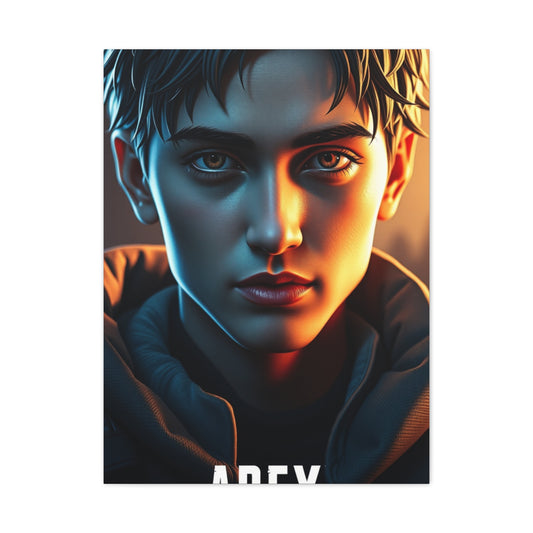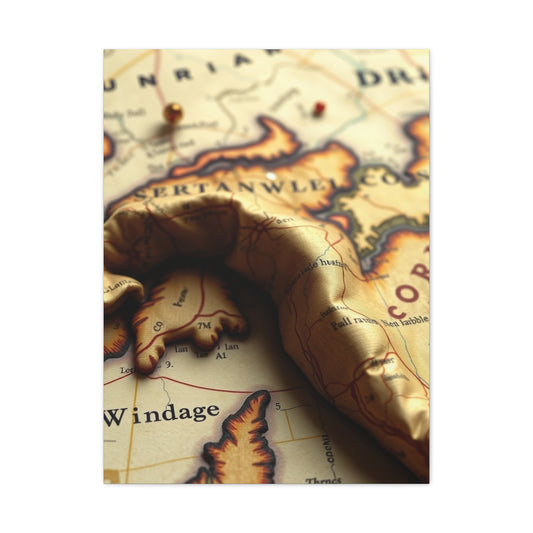Creating your own custom food photography backdrops not only allows you to express your creativity but also helps save money. When you add a personal touch to your photography, it makes your images stand out, giving them a unique character that will catch the eye of anyone who views them. With a little time and effort, you can transform basic materials into professional-looking backdrops for food photography. In this guide, we’ll explore 12 affordable and simple DIY food photography backdrops that you can make at home to enhance your photography skills.
1. Hand-Painted Canvas Backdrop
One of the most creative and personalized ways to create a DIY backdrop for food photography is by painting your own canvas. This technique allows for endless opportunities to explore texture, color, and design. The beauty of a hand-painted canvas backdrop is that you can completely control the look of the background, ensuring that it complements the food you're photographing. It can help elevate your photos and create a rustic yet polished atmosphere that suits a wide range of food styles, from hearty dishes to delicate pastries. This method is particularly favored for its versatility and the artistic quality it brings to food photography.
To begin, the first step is to purchase a canvas drop cloth. These are usually available at most hardware stores and are commonly used by painters to protect floors during painting projects. A canvas drop cloth is the ideal material for a backdrop because it is sturdy, durable, and provides a perfect surface for painting. Additionally, these cloths are large enough to create multiple backdrops from a single piece of fabric, which makes them cost-effective and convenient for photographers working on a budget. After obtaining your canvas, you can cut it into the desired sizes based on the dimensions of your photography setup. It’s recommended to cut the cloth into manageable pieces that are easy to handle during your photo shoots.
|
Related Catagories: |
Next, it’s time to choose the paint colors for your canvas. You don’t need to buy a lot of expensive paints; instead, consider picking up sample-sized jars from your local hardware store. These sample paints are often available in a wide range of colors and are an affordable option for creating custom backdrops. To maintain a cohesive look, it’s best to select two or three hues within the same color family. This ensures that the backdrop complements your food without overpowering it. When applying the paint, start by using a roller to cover the canvas with a base layer. The roller will provide a smooth, even application. Once the base layer has dried, you can get creative with texture. Techniques like sponging or ragging are perfect for adding depth and dimension to your backdrop. For example, a sea sponge can be dipped into the paint and gently pressed onto the canvas to create a mottled effect that looks both natural and visually appealing. Alternatively, a scrunched-up cloth can be used to press the paint onto the fabric for an even more textured finish. These techniques are great for producing an organic, layered appearance that gives your photos a more dynamic and inviting feel.
The drying time for the paint is essential to ensure that it sets properly before being used in a photo shoot. Once your hand-painted canvas has dried, you can easily roll it up for convenient storage until your next session. Because it’s flexible and lightweight, this type of backdrop is also very easy to transport and store, making it an excellent option for photographers who travel or work in different spaces. The result of this DIY project is a custom, one-of-a-kind backdrop that brings texture, depth, and richness to your food photography. Whether you’re capturing rustic bread, colorful salads, or decadent cakes, a hand-painted canvas backdrop offers endless possibilities for achieving a unique look.
2. Ceramic Tile Backgrounds
Ceramic tiles provide a timeless, clean backdrop for food photography, making them an excellent choice for those who want a minimalist or modern aesthetic. These tiles are not only affordable but also incredibly durable, making them ideal for long-term use in a food photography studio or home setup. Ceramic tiles are available in various sizes, shapes, and colors, allowing you to customize your backdrop to suit your style and food photography needs. By choosing neutral-colored tiles such as grey, beige, or white, you can create a simple yet chic background that complements a wide variety of dishes, from savory meals to sweet treats. The neutral tones provide the perfect contrast against most foods, allowing the food itself to be the focal point of the photograph.
One of the advantages of using ceramic tiles for your backdrop is their ease of maintenance. In food photography, where spills and drips are common, the ability to easily clean your backdrop is essential. Tiles can simply be wiped down after each shoot, ensuring they stay in pristine condition. This is especially useful when working with messy foods or ingredients like sauces, cheese, or fruit. You won’t have to worry about stains or long-lasting damage from food, as ceramic tiles are both sturdy and resilient.
In terms of aesthetic choices, you’ll want to avoid glossy or highly reflective tiles, as they can create distracting glare in your photos. Instead, opt for matte or satin finishes, which will help maintain a smooth and even surface without causing any reflections that could interfere with the composition of your shot. The key is to choose a finish that enhances your food without detracting from it. If you’re unsure of what type of finish to choose, consider how the tiles will interact with your food's natural shine and texture. For example, if you're photographing a shiny piece of fruit or a glossy dessert, matte tiles will provide a subtle and balanced contrast.
Another great aspect of ceramic tiles is that they can be easily customized. You can buy standard-sized tiles from your local home improvement store and cut them to fit your desired backdrop dimensions. Alternatively, for larger setups, you can use multiple tiles to create an expansive and cohesive background. If you prefer a more luxurious or high-end appearance, you can find tiles that mimic the look of natural stone or marble, which adds an elegant touch to your food photos without the high cost. The versatility of ceramic tiles makes them a go-to option for both beginner and professional food photographers alike.
To keep the tiles secure and steady, it’s advisable to attach them to a lightweight backing, such as plywood or foam board. This provides extra stability, particularly if you plan on moving or adjusting the backdrop frequently. Attaching the tiles to a sturdy base ensures that the tiles stay in place during shoots and minimizes the risk of shifting or falling during your setup. This also makes the backdrop more portable and easier to manage, especially for those who shoot in different locations or need to store their backdrops between sessions.
Ceramic tiles also work well with a variety of food styles, from casual snacks to elegant dishes. For example, they pair beautifully with bright, colorful foods such as salads, fruits, and pastries. The clean, neutral background allows the vibrant colors of the food to stand out and creates a sophisticated yet simple backdrop that won’t compete with the dish. In contrast, for more rustic or hearty foods, such as breads, cheeses, or meats, ceramic tiles provide a subtle and understated background that still enhances the visual appeal of the food. By using ceramic tiles as your DIY backdrop, you can achieve a professional, polished look that is easy to maintain and adaptable to different types of food.
3. Custom-Painted Wooden Surfaces
Wooden surfaces are a classic choice for food photography because they exude a rustic charm and warmth that makes the food feel more inviting and down-to-earth. The beauty of using wooden backdrops is the natural texture that enhances the visual appeal of any dish. Whether you’re photographing hearty stews or delicate desserts, the grain of the wood provides a beautiful and organic element that complements various food types. Custom-painting your own wooden backdrop gives you complete control over its look, allowing you to create a design that complements your food, mood, and overall aesthetic. The versatility of wood as a material provides a variety of possibilities, from rough, unpolished surfaces to smooth, sophisticated finishes.
The process of creating your own painted wooden surfaces begins with acquiring plywood sheets from any home improvement store. Plywood is an affordable material that’s lightweight and easy to store. It also provides a large, flat surface that’s ideal for painting, making it an excellent option for food photography. The beauty of using plywood lies in its flexibility—it can be cut into smaller pieces to accommodate the specific size of your setup, whether you're shooting a single dish or multiple items. When selecting plywood, make sure it is smooth to the touch, as rough-textured wood may distract from the food you are photographing.
To achieve the best results, it’s recommended to use water-based paints, as these are easy to work with and dry quickly. Water-based paints also have a matte finish, which is ideal for food photography, as they don't reflect light as much as glossy finishes. The key to a great painted wooden backdrop is choosing colors that complement your food. Earthy tones like soft browns, muted greens, and warm reds are great choices, as they tend to evoke a sense of warmth and comfort, which is ideal for rustic or natural dishes. When you use these types of colors, they help to create an inviting and homey atmosphere for your food photos.
One of the most fun and creative aspects of custom-painted wooden surfaces is the ability to experiment with different techniques and textures. To achieve a smooth, vintage-inspired effect, you can use a large sponge to blend various shades together, creating a soft, ombre-like transition between the colors. This effect can be particularly striking when photographing food like roasted vegetables, grilled meats, or rustic bread, as the colors of the backdrop will subtly highlight the food without stealing the focus. If you’re looking for a more dynamic or textured backdrop, you can layer different colors on the plywood in random directions, using brushes, sponges, or even your hands. This technique creates more depth and adds visual interest, which can be particularly effective for photographing artisanal or rustic foods like pies, cakes, or even fresh herbs.
Once your painted surface has dried, you can finish it off by applying a thin coat of matte, water-resistant sealant. This step is essential to protect your painted wooden backdrop from damage and wear over time. Sealant helps preserve the paint and ensures that your backdrop remains in good condition even after multiple uses. It also prevents any food stains from permanently affecting the backdrop, ensuring that your wooden surface continues to enhance your food photography for many shoots to come. The matte finish also ensures that there are no distracting reflections or shine that could take attention away from your food.
Creating custom-painted wooden surfaces is an affordable and effective way to enhance the quality of your food photography. Not only does it allow you to design a backdrop that fits your unique style, but it also brings a touch of creativity and authenticity to your photos. Whether you're going for a minimalist aesthetic or a more vibrant, layered design, painted wood can easily adapt to different food types and photography styles. The textured backdrop it creates will add depth, character, and warmth to your shots, making it an excellent choice for food photographers who want to create standout images.
4. Craft Paper Backdrops
For food photographers working within a budget, craft paper offers a quick, inexpensive, and highly customizable option for creating unique backdrops. Craft paper is available in a wide variety of colors and textures, making it an ideal material for experimenting with different looks. Its lightweight nature and ease of cutting make it perfect for creating tailored backdrops that suit any food photography project. Whether you’re shooting vibrant fruits, delicate pastries, or rustic dishes, craft paper can help elevate your photos with its versatility and personality.
One of the biggest advantages of using craft paper is its affordability. Unlike other types of professional backdrops, craft paper is budget-friendly, making it a perfect option for both beginners and seasoned food photographers. You can find craft paper at most local craft stores or even purchase it in bulk online, which further helps keep costs low. When working with craft paper, you can easily cut the paper into the desired size to match the scale of your setup, whether you’re shooting small plate dishes or large spreads. Additionally, craft paper is relatively easy to store, as it takes up very little space, which is a plus for photographers who may not have a lot of room for large backdrops.
Craft paper is particularly effective for food photography where bold, energetic compositions are required. If you're photographing vibrant dishes, such as fruit salads, brightly colored desserts, or fresh vegetable platters, craft paper can bring out the vivid colors of your subject. Bright colored craft paper, such as deep blues, rich yellows, or even playful pinks, can create an engaging background that enhances the food without overshadowing it. The contrast between the bright tones of the paper and the vivid colors of the food can create a high-energy, dynamic shot that grabs the viewer’s attention.
For a more subtle or refined look, you can opt for muted or textured craft paper. Soft neutrals like beige, light grey, or pale pastels work wonderfully as understated backdrops that allow the food to take center stage. These neutral tones help create a calm and sophisticated atmosphere, making them ideal for photographing more delicate foods, such as cakes, pastries, or freshly brewed coffee. Textured craft paper adds another layer of visual interest to your shots, helping to bring depth to the image without distracting from the food. The texture can also evoke a more rustic or organic feel, which is perfect for foods with natural or homemade qualities, such as loaves of bread, cheeses, or roasted meats.
One of the benefits of using craft paper in your food photography is its ability to adapt to different shooting styles and concepts. You can experiment with different types of craft paper for various food types and themes. For example, if you’re aiming for a more rustic or natural vibe, consider using craft paper with a rough texture or earth-tone colors like browns and greens. On the other hand, if you're shooting something more contemporary or modern, sleek, shiny craft paper in solid hues like navy blue, charcoal, or even black can provide a clean and professional backdrop that enhances the modern aesthetic of your dish.
Another creative way to use craft paper is by combining it with other materials to create a multi-layered backdrop. For instance, you can use two or three different pieces of paper in varying colors or textures to create contrast and depth, giving your photos a more dimensional and professional look. Craft paper is also highly flexible in terms of experimentation, and you can even experiment with folding or crumpling the paper to add texture and movement. This can work well for photographing foods that benefit from a sense of action or a more playful visual tone, such as baked goods being cut into, fruits being sliced, or a hand reaching for a bite.
|
Related Catagories: |
Ultimately, craft paper offers an affordable, creative solution for food photographers looking to create dynamic and engaging backdrops. Its versatility in color, texture, and size makes it a great choice for photographers of all experience levels. Whether you’re aiming for a bold, vibrant backdrop or a subtle, neutral tone, craft paper can help you achieve the look and feel you want in your food photography. It’s a practical, cost-effective tool that will add personality and charm to your images, helping you showcase your food in the most visually appealing way possible.
5. Repurposed Baking Paper
Repurposing used baking paper for food photography is an excellent way to create a unique, organic texture that enhances your food shots. Baking paper has an inherent charm, with its natural, slightly worn look providing an authentic touch that complements various food types. The slightly aged appearance of used baking paper adds an extra layer of depth and visual interest, making it an ideal backdrop, particularly for close-up shots of baked goods or delicate dishes. The beauty of this approach lies in its simplicity and the ability to create a rustic, natural aesthetic that is difficult to replicate with more polished backdrops.
One of the key benefits of using used baking paper is its cost-effectiveness. Unlike many specialty backdrops that can be expensive, baking paper is inexpensive and can be reused multiple times, making it an accessible option for photographers on a budget. If you already have a stash of baking paper in your kitchen, repurposing it for photography allows you to breathe new life into an otherwise disposable material. It’s readily available, easy to manipulate, and requires little preparation, making it an ideal choice for spontaneous photo shoots or when you’re looking to create a textured backdrop quickly.
To repurpose used baking paper, start by checking the condition of the paper. If it looks too pristine and clean, you can rough it up a bit to give it a more rustic appearance. A simple method for achieving this effect is by coating the baking paper with butter or oil. Once coated, place the paper in the oven at high heat for a short period. The oil or butter helps to age the paper, turning it a golden brown and adding subtle spots and textures that contribute to its weathered, lived-in appearance. The high heat creates slight burn marks, adding even more character to the paper and enhancing its vintage look. This process gives the paper an attractive and rustic hue, ideal for food photography that focuses on the natural beauty and imperfections of the ingredients or dishes.
Baking paper works especially well in food photography where you're focusing on close-up details. Whether you're photographing cookies, cakes, pastries, or other baked goods, the soft texture of the paper can frame the subject in a way that brings out the finer details without overpowering them. It creates a subtle background that allows the food to take center stage, while still providing an organic and warm texture. For example, photographing freshly baked cookies with subtle texture from the paper creates an inviting, homey feel that resonates with viewers and evokes the comfort of homemade treats.
Another advantage of using baking paper is its versatility. Not only can it be used to enhance the texture in baked goods photography, but it also works well for more general food shots. For instance, when photographing salads, fruits, or meats, baking paper offers a soft background that doesn’t detract from the main subject. The texture of the paper adds an understated element that complements the food without making it the focal point. This simplicity allows for a greater focus on the food itself, highlighting its shape, color, and details.
Because baking paper is designed to be non-stick, it provides a smooth surface that won't compete with the food you’re photographing. While it does offer texture, it remains neutral enough to keep the food as the star of the shot. For photographers who want to create a more layered look, baking paper can also be paired with other elements, such as rustic wooden boards, vintage trays, or fabric napkins. By layering the paper with these additional textures, you can create depth and richness in your photos, resulting in more compelling compositions.
The organic and natural feel of repurposed baking paper makes it an excellent choice for food photography that aims to capture a sense of authenticity and simplicity. It’s particularly useful for food bloggers, home chefs, or anyone who wants to present their food in a relatable, down-to-earth way. Whether you're photographing a casual snack or an elaborate dessert, the use of baking paper will help bring a natural, warm atmosphere to your photos, enhancing the overall mood and aesthetic. Repurposing baking paper is a cost-effective, sustainable choice that gives a professional touch to food photography without requiring expensive or hard-to-find materials.
6. Vintage Tray Backgrounds
Vintage trays are another brilliant option for food photography, offering a nostalgic charm that adds a sense of history and character to your shots. Vintage trays often come with unique patinas or wear and tear that provide a level of authenticity that new, mass-produced trays simply can’t replicate. These trays exude a sense of timelessness, making them an ideal backdrop for food photography, especially when capturing intimate or rustic food settings. The smooth, flat surface of a vintage tray allows the food to remain the focal point while adding depth and warmth to the overall image.
Vintage trays also help create a visual narrative in your photos. They have a history of their own, which can be a great way to evoke emotion or transport the viewer to another time. When shooting dishes like a cup of coffee, a slice of cake, or a bowl of soup, the vintage tray can add a sense of charm and coziness, as though the food has been served in a beloved, time-worn setting. This kind of storytelling element is what makes vintage trays such a great tool for capturing the essence of food in a way that feels personal and inviting.
You can often find vintage trays in thrift stores, antique shops, or even online marketplaces like eBay and Etsy. Each tray is unique, so when choosing one for your food photography, it’s important to look for trays that complement the food and style you’re going for. Be sure to select a tray that doesn’t have a high-gloss finish, as shiny surfaces can reflect light and create distracting glares in your photos. Trays with a matte finish or those with a subtle texture are best for food photography because they won’t steal the spotlight from your dish.
Vintage trays are particularly effective for close-up shots, where you want to highlight the texture and details of the food. Whether you're shooting a stack of pancakes, a selection of cheeses, or a spread of appetizers, the tray can serve as a neutral yet elegant surface that supports the food while contributing to the overall mood of the image. These trays offer a much more visually interesting alternative to plain, flat surfaces like tables or countertops. They also add a sense of authenticity and character that elevates the image, giving it a more dynamic and layered feel.
In addition to their aesthetic value, vintage trays are highly versatile. They come in a variety of materials, including metal, wood, and even glass, each of which adds a different mood or texture to the shot. Metal trays, for example, can add a sleek, modern touch to your food photography, while wooden trays offer a rustic, country-inspired look that works well with comfort foods or farm-to-table dishes. When using a vintage tray, consider how the material of the tray enhances the food you’re photographing. For example, a vintage silver tray can add a touch of elegance to a delicate dessert like macarons or pastries, while a weathered wooden tray can complement hearty, rustic dishes like soups, stews, or roasted meats.
Vintage trays also work well when layered with other elements, such as linen napkins, ceramic plates, or glass jars. The contrast between the tray and the food helps create a sense of depth in the image, which can make the food appear more dimensional and appetizing. You can experiment with different compositions, placing the food in the center of the tray or arranging it artfully along the edges, depending on the effect you want to achieve.
The key to using vintage trays effectively in food photography is to ensure that they complement, rather than overwhelm, the food. A tray that is too ornate or detailed can distract from the dish, so it’s important to choose one that balances well with the food’s aesthetic. When used properly, vintage trays bring warmth, history, and charm to your food photos, helping to create an inviting and timeless atmosphere that appeals to viewers and enhances the presentation of your food.
7. Faux Marble with Vinyl Contact Paper
For those who love the luxurious look of marble but don’t want to spend a lot of money, vinyl contact paper is a great solution. Available in a range of marble-like patterns, vinyl contact paper can mimic the appearance of real marble at a fraction of the cost. The material is easy to apply and can be glued to a thin board, such as plywood or foam core, to create a sturdy backdrop.
While vinyl contact paper is often glossy, which can cause reflections, you can minimize this by adjusting your camera angles and lighting. Choose a faux marble pattern with cool tones to create a sophisticated and modern backdrop for your food photography. Faux marble is especially effective when photographing dishes that have a clean, elegant aesthetic, such as salads, pastries, or cheese boards.
8. Paper Grocery Bags
A simple, everyday grocery bag can be transformed into an attractive backdrop for your food photography. Paper grocery bags have a natural, rustic look that can add texture and warmth to your images. To use them, simply cut the bag open, flatten it, and crumple it slightly to give it some texture.
While this option is incredibly inexpensive and easy to find, it works best for casual or rustic food photography. Paper bags are perfect for capturing the essence of homemade or artisanal foods like sandwiches, pies, or homemade bread. Although paper bags are not the most durable, they offer a great single-use option for creating unique backdrops without spending any extra money.
9. Rustic Burlap Background
Burlap is a textured fabric that brings a rustic and earthy element to your food photography. It’s a great option for photos that showcase natural, wholesome ingredients like root vegetables, grains, or rustic bread. Burlap’s rough texture provides a subtle but interesting backdrop that doesn’t distract from the food.
You can easily find burlap at craft stores or fabric shops. Cut it to size, and either use it as a full backdrop or layer it with other materials to create depth. Because of its natural look, burlap works best with foods that have an organic or farm-to-table aesthetic. Whether you’re shooting a fresh loaf of bread, a bowl of soup, or a platter of roasted vegetables, burlap adds a warm, inviting vibe to your food photography.
10. Linen Fabric Backdrop
Linen is a classic material that offers an elegant, soft backdrop for your food photography. It’s perfect for creating an airy and sophisticated look that complements delicate dishes like cakes, salads, or pastries. You can use linen napkins, tablecloths, or even patterned fabric to add texture and visual interest to your shots.
Neutral tones like white, beige, or grey work best for food photography, as they don’t compete with the colors of the food. However, you can experiment with bolder colors or patterned linens to create a more vibrant scene. Linen is versatile, and its natural fibers create a soft, pleasing effect in photos, making it an excellent choice for anyone looking to add a touch of elegance to their food photography.
11. Wooden Cutting Boards as Backdrops
Wooden cutting boards are not only functional but can also double as stylish backdrops for your food photography. The coarse grain of the wood provides a beautiful, textured surface that can enhance the rustic charm of your shots. Choose a cutting board with a neutral tone—avoid boards that are too warm or orange, as they can clash with the food.
A vintage cutting board or one with a unique design can add character and interest to your images. Wooden cutting boards are great for capturing everything from sandwiches to fresh produce, giving your food a natural and inviting backdrop. These versatile surfaces are easy to store and can be used in a variety of setups, making them a must-have in your DIY food photography arsenal.
12. Parchment Paper for Subtle Texture
Parchment paper is a simple yet effective way to add texture to your food photography. Whether you use it flat or crumpled, parchment paper can create a soft, subtle background that enhances the food without drawing too much attention. It’s perfect for photographing baked goods like cookies, cakes, or pastries.
Natural parchment paper works well for earthy, rustic foods, while white parchment is ideal for creating a fresh, clean look. You can also layer parchment paper with other materials to create a more complex background. Whether you're photographing baked treats or savory dishes, parchment paper adds a delicate touch to your photos.
Final Thoughts on DIY Food Photography Backdrops
Creating your own DIY food photography backdrops is a fun and cost-effective way to add personality to your images. With just a little creativity, you can turn everyday materials into professional-looking backdrops that enhance your food shots. From rustic wooden surfaces to elegant linen and textured parchment paper, the possibilities are endless. Experiment with different materials and techniques to discover what works best for your style and your food photography needs. By utilizing these simple and affordable DIY ideas, you can elevate the quality of your images and take your food photography to the next level.










